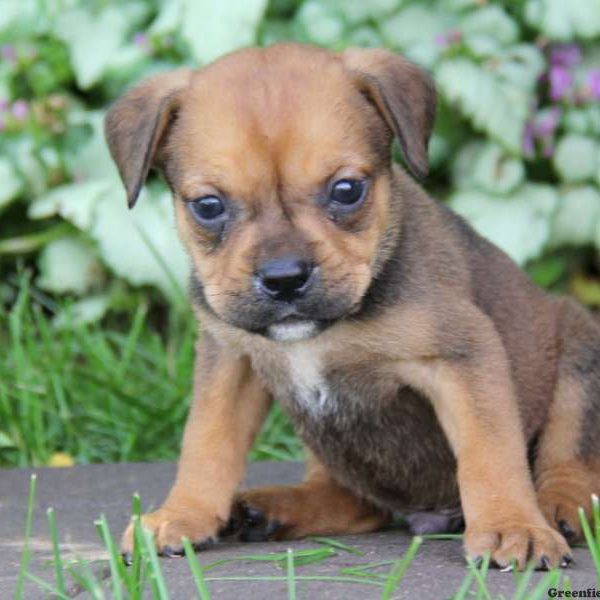
-
Activity Level:
moderate
-
Shedding Level:
moderate
-
Grooming Level:
low
-
Trainability:
moderate
-
Good for Novice Owners:
moderate
-
Adaptability:
high
-
Kid/Pet Friendly:
often
-
Prey Drive:
low
-
Watchdog:
very alert
- Average Size: Large
- Average Lifespan: 8-12 years
- Registered?: other
English Bullweiler Dog Breed Information
Overview
Temperament
Adaptability
Health
Owner Experience
Grooming
Activity Level
Size
Life Span
Did You Know?
The English Bullweiler is a cross between an English Bulldog and a Rottweiler. They are sometimes also called an English Rottbull. Although a mixed-breed dog can take on any combination of characteristics from their parents, an English Bullweiler tends to be a large, loyal, and playful sweetheart that loves their families.
The American Kennel Club may not recognize the English Bullweiler, but other notable dog organizations do. The American Canine Hybrid Club, Designer Dogs Kennel Club, International Designer Canine Registry, and more all recognize the English Bullweiler.
Although this puppy grows into a large, strong, and muscular dog, they are an affectionate sweetheart that is devoted to their families. They tend to be loving and sweet with a playful personality. They tend to be easygoing and don’t take themselves too seriously, which often results in plenty of comedic antics to keep you laughing.
English Bullweilers tend to get along well with children, other dogs, and other pets. Because they grow to be large dogs, they can easily knock over young children in their excitement. So, you will want to teach your dog and your children how to interact appropriately and also supervise any playtime.
They are naturally wary and initially suspicious of strangers because of their guardian instincts, but they tend to warm up once they have been introduced. They can be prone to barking, especially if they are bored. But, if you do some work early on to train your dog to stop barking, you can keep it from becoming a nuisance behavior.
The English Bullweiler is a highly adaptable dog breed. They tend to thrive in larger homes with room for them to run. But, they can adapt well to apartments too as long as they get enough attention, exercise, and mental stimulation. They will grow into a large dog, so you do want to keep that in mind if you live in a smaller apartment.
Although having a Rottweiler in the cross may help, an English Bullweiler is still likely to be considered a brachycephalic dog. This means they are particularly sensitive to heat and can overheat more easily than non-brachycephalic dogs. They do relatively well in cooler climates.
But, they do have a short coat, so it wouldn’t be a bad idea to have some winter dog products on hand to help them stay warm when temperatures are low. Although they can handle some alone time, they love being around you and thrive on attention. So, they should not be left alone for long periods of time.
Although mixed-breed dogs can sometimes be healthier than their purebred counterparts, it’s not a guarantee. A mixed-breed dog can inherit none of the conditions common to their parent breeds, but they could also inherit any combination of them or even all of them from one or both of the parents.
For an English Bullweiler, potential health conditions to be aware of include elbow dysplasia, hip dysplasia, osteosarcoma, Progressive Retinal Atrophy, and entropion. They can also be prone to developing allergies.
Reputable breeders will be screening their dogs to make sure they are not passing preventable issues on to puppies. So, don’t be afraid to ask about the health and genetic history of both of the parents. You can also ask to see any health clearances or results from tests that have been done.
An English Bullweiler is intelligent and eager to please. They can pick up on things quickly, but they can also be bull-headed and stubborn. This stubborn streak can be difficult for first-time dog owners to navigate alone, so puppy training classes are recommended.
Puppy training classes tend to be a good idea regardless of owner experience. Not only do they help keep training consistent and strengthen the bond you have with a puppy, but they also often offer opportunities to socialize a puppy.
English Bullweilers have a short coat that sheds moderately year-round. Brushing them a few times a week with a comb and a rubber curry brush is the minimum. Daily brushing is even better and can help contain the shedding. Bathing is on an occasional as-needed basis, but is recommended every 6 to 8 weeks.
These dogs will also tend to drool. So, you may want to have a cloth on-hand to help wipe up occasionally. You will also need to check and wipe their face wrinkles with a damp cloth to help prevent their skin from getting irritated. In addition to coat and wrinkle care, you will also need to care for your English Bullweiler’s nails, ears, and teeth.
Depending on how quickly their nails grow, cutting your dog’s nails once or twice a month is usually enough to keep them from growing too long. Checking ears weekly and carefully cleaning your dog’s ears as needed can help prevent ear infections.
Because gum disease is one of the most common health issues in dogs and often leads to other health problems, practicing good dental care for dogs throughout your dog’s life is essential. Brushing your dog’s teeth or using an enzyme toothpaste every day is ideal.
Although an English Bullweiler is an energetic, athletic, and playful dog, they are not a high-energy dog breed. They tend to sit in a more moderate range. Daily walks plus playtime and some time to run are usually enough for this dog.
But, they love to be with you and enjoy being active, so they will likely be up for more activity if you are. Just make sure English Bullweiler puppies finish growing and developing before you take on more intense or high-impact activities.
For large dog breeds, this tends to be around 2 years old. Your vet can help you determine when your individual dog has finished growing and their bones and joints have finished developing.
A fully-grown English Bullweiler usually stands 18-25 inches tall and weighs 70-110 pounds.
An English Bullweiler generally lives for 8-12 years.
A Bullweiler could refer to a cross between a Rottweiler and either an English Bulldog, an American Bulldog, or a French Bulldog. An English Bullweiler has an English Bulldog parent while an American Bullweiler has an American Bulldog parent and a French Bullweiler has a French Bulldog parent.






